Tours
The rates are given in USD per car
Guide service is 30-40 USD daily

Arrival and meeting in the Zvartnots airport of the Yerevan
Zvartnots airport
Airport Facilities: Zvartnots airport has a transit zone and provides services to transit and transfer passengers, including permission for visiting the city as well as hotel services. Facilities in airport include: hotel located nearby terminal, store boutiques in front of main entrance, public transport stations, petrol pump and parking areas.
Business Facilities: Yerevan airport has official delegations hall and VIP hall (available for additional fee of AMD 25.000 per person which is about USD 45)
Driving Directions: Airport Zvartnots is located 10 km of Yerevan city center.
At departure from Zvartnots, non-transit passengers should pay air-duty of AMD 10.000 (about USD 18)
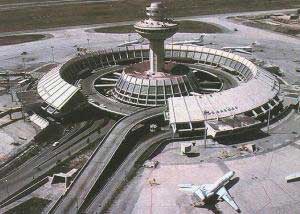
(hour)
-
14 pax
30
17 pax
40
50 pax
65
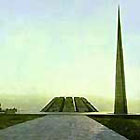
Erebuni Museum
Erebuni Museum is operating from 10am to 04pm, closed on Mondays. The fortress Erebuni on Arin-Berd Hill was erected by the Urartu king Argishti I in 782 BC. Urartu was a state in Asia Minor (ninth to sixth centuries BC.), which at the height of its power embraced all the Armenian foothills. Erebuni Fortress and the excavations of other towns show that the gs are astonishing in their magnificence, well-planned, andUrartu state enjoyed a very advanced cultural level; their buildin elegant. A museum, whose exhibits are constantly being supplemented by new finds, stands at the bottom of Arin-Berd Hill.
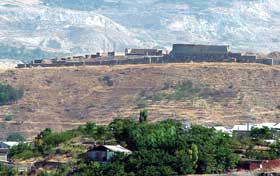
Tsitsernakaberd
Tsitsernakaberd is a memorial to 1.5 million innocent victims of the genocide of Armenian people in 1915. The memorial and museum are located at Tsitsernakaberd Park, on a hill overlooking the city. Visits to this memorial and museum are reverent and should be made separately. The memorial is outdoors and may be visited any hour. The monument of Tsitsernakaberd consists of several parts. One is the mooring Alley, which is 110 meter long, 10 meter wide. Parallel to it is the mooring wall. The writings on the wall indicate the regions, which suffered the most from the war. The other part is the obelisk (column) 40 meter high which symbolizes the rebirth of Armenian people and repel for humanity. It stretches high to the sky in two parts that are separated by a fissure. The mausoleum consists of 12 slopping stones, 12 steps taking you down to eternal flame. These twelve stone blocks represent the provinces of western Armenia that were emptied of their native Armenian population. Ten thousands of Armenians make a pilgrimage to the memorial each year on April 24, which is a national day of commemoration and mooring.
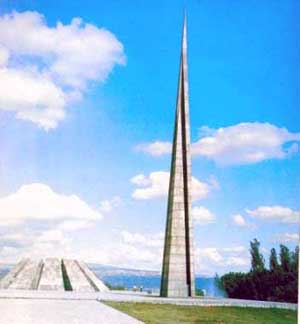
History Museum
History Museum is operating from 10am to 04pm, from 11am to 03pm (on Sundays), closed on Mondays. The History Museum, founded in 1921, has 160,000 exhibits. A visit to the museum is a fascinating journey from the Stone Age and man's first settlements to the end of the 19th century. There are unique relics of how people lived, beginning from the first social system, stone age tools, items made of bronze and iron, weapons from the time of the Urartu state, statuettes, jugs, coins, ornate jewelers, and household utensils found during excavations. The ethnographic section houses a collection of national costumes, carpets, amulets and agricultural implements. The architecture of the Middle Age and urban culture of the ancient capitals of Armenia- Artashat, Dvin, and Ani is represented in varied fashion.
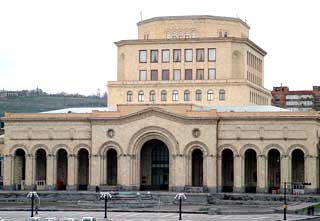
Yerevan Brandy Company
Yerevan's Brandy Factory is based in 1887, lets out 18 names of brandy among them 5 unary and 13 branded others. Since 1998 year Brandy Factory of Yerevan with the own enterprises - factories of Armavir, Burastan and Aygevan, has passed in possession of the French large company Perno Rekar and for this short, 2,5 annual periods brandies, which are let out by a factory, for their high qualities at the International exhibitions, fairs and tastings were awarded with 36 honourable diplomas and medals, including 23 gold, 12 silver and 1 bronze. From them Nairi - 9 gold, Dvin - 3 gold and 3 silver, Celebratory 5 gold and so on. Yerevan Brandy Company offers free tours to those who call ahead to make arrangements. One of the tours' highlights is the reserve room of 24000 bottles, some of them one century old.

Matenadaran Museum
Matenadaran Museum is operating from 10am to 04pm, closed Mondays. Matenadaran is a scientific research institute of old manuscripts at the Government of the Republic of Armenia. It is the largest center of study and safekeeping of Armenian manuscripts in the world. Originals and hand-written copies of more than 17,000 manuscripts and around 300,000 divan and archive documents not only in Armenian, but also Greek, Latin, Arabic, Persian, Assyrian, Jewish, Hindu, and Japanese are kept in the Matenadaran. The institute annually provides with around 3,000 handwritten and published materials, available for study. The Matenadaran (manuscript library) is not just for its exhibitions per se, but rather for its status as the eternal (one hopes) repository for Armenia's medieval written culture. A vast gray basalt mass at the top of Mashtots Blvd. (built 1945-57, architect M. Grigorian), the Matenadaran is guarded by the statue of primordial alphabet-giver S. Mashtots (ca. 400) and those of the other main figures of Armenian literature: Movses Khorenatsi (5th -- or maybe 8th -- century "father of Armenian history"); Toros Roslin (13th c. manuscript illuminator in Hromkla/Rum Qalat near Edessa); Grigor Tatevatsi (theologian of Tatev Monastery, died 1409); Anania Shirakatsi (7th c. mathematician, studied in Trebizond, fixed the Armenian calendar); Mkhitar Gosh (died 1213, cleric and law codifier); and Frik (ca. 1230-1310, poet). There are khachkars and other ancient carved stones in the side porticos. The entry hall has a mosaic of the Battle of Avarayr, and the central stair frescos of Armenian history, all by H. Khachatrian. Beside the exhibit hall (and a small gift shop with excellent hand-painted reproductions of important manuscript miniatures), there are conservation rooms and shelf on shelf of storage (closed except to specialists with advance permission) for the 17000 manuscripts in a dozen languages. Cut deep in the hillside behind, and shielded by double steel blast doors, is a splendid marble tomb designed to preserve the collection against nuclear holocaust. Alas, the execution did not live up to the grandiosity of the conception -- water from a series of underground springs drips through the vaults, making them unusable until a few million dollars are found for a total reworking.
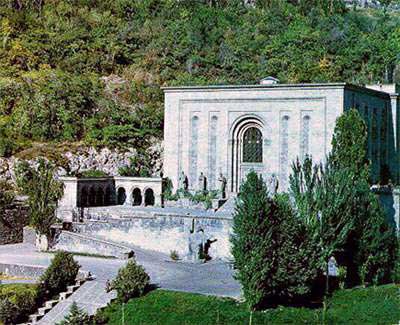
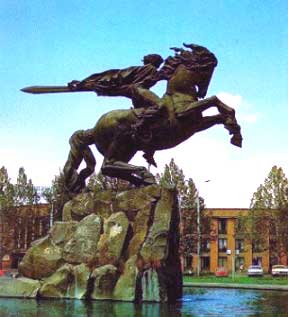
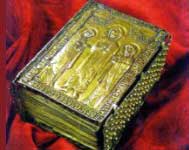
(hour)
-
14 pax
45
17 pax
50
50 pax
65
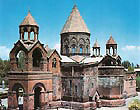
Echmiadzin Museum
You must not leave Echmiadzin until you get into the Manougian Museum. This structure contains numerous paintings, souvenirs, religious artifacts, and illuminated manuscripts so insist on seeing it. Another secret is a fire pit beneath the altar. This is where pagans worshipped fire before Christianity. It is in the small museum in the main cathedral, with the entrance to the right of the altar. There are some religious artifacts in display cases, but you usually need to ask to be shown the fire worshipping pit, at which time a small donation is hinted at.
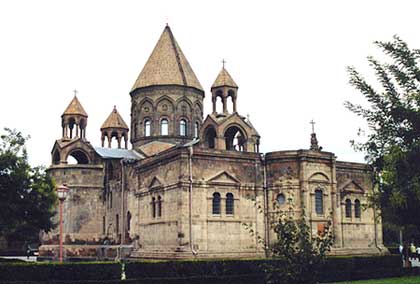
Zvartnots
Zvartnots, a complex of structures erected in the middle of the 7th century near Echmiadzin, is of extreme architectural value. It is a monument which embodies the centuries old traditions of Armenian architects. The ruins of the outstanding church of Zvartnots built in 641-61 are still being found not far from Echmiadzin, where, according to tradition, St. Gregory the Illuminator and King Tiridates met. The Church of Zvartnots and the adjacent Patriarchal palace were erected by Catholicos Nerses III "The Builder". According to Stepanos Taronatsi (Stepanos of Taron, known as Asokhik) - an Armenian historian of the late 10th and the early 11th centuries, Zvartnots' architecture was supposed to impress the onlooker by its extraordinary artistic splendor. To the south-west of the temple there was the Catholicos' palace which has also come down to us in ruins. The eastern part included dwelling and service premises, such as storerooms and a bathroom. The latter consisted of two sections, the bigger one intended for common, and the smaller one for privileged visitors. The western part comprised small premises and two halls. Zvartnots lay in ruins as early as in the tenth century. The temple stood for 300 years and was destroyed in a disastrous earthquake. Nonetheless, the remnants of Zvartnots, even in ruins, are a majestic sight.
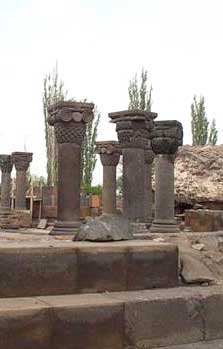
(hour)
3
14 pax
50
17 pax
55
50 pax
120
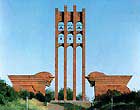
Echmiadzin Museum
You must not leave Echmiadzin until you get into the Manougian Museum. This structure contains numerous paintings, souvenirs, religious artifacts, and illuminated manuscripts so insist on seeing it. Another secret is a fire pit beneath the altar. This is where pagans worshipped fire before Christianity. It is in the small museum in the main cathedral, with the entrance to the right of the altar. There are some religious artifacts in display cases, but you usually need to ask to be shown the fire worshipping pit, at which time a small donation is hinted at.

Sardarapat
53 km from Yerevan, in the centre of the Ararat valley, near the town Armavir, there is the memorial architectural-sculptural complex of Sardarapat built in honour of the 50th anniversary of the Armenian people's victory over the Turkish invaders in 1918. The winged oxen at the park entrance symbolizing the titanic might of the people, the 35-meter-tall bell tower, and the Victory Wall crowned with stone eagles personifying the unbending will of Sardarapat heroes remind one of the heroic past of the Armenian people. The ensemble centres on the buildings of the museum and the Vardavar refectory, which offer a happy blend of medieval and modern Armenian architecture. Found near the complex is the Armenian Ethnography Museum with about 2,000 distinctive works of folk art on display, including pottery, carpets, musical instruments, tapestry, lace, and ceramics. The ground floor central hall contains commemorative material from the battle. Starting from the right, the lower galleries present archaeological materials from Neolithic to Medieval, and implements for various traditional handicrafts. Upstairs are exhibits of carpets and embroidery, modern Armenian decorative ceramics, and jewelry.

(hour)
4
14 pax
60
17 pax
65
50 pax
155
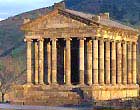
Garni
35 km south from Yerevan the picturesque monument of the Hellenistic period, the fantastic piece of ancient Armenian architecture is the citadel and pagan temple of Garni. The exact date of its construction is unknown; while chronicles tell it was already built in 1st century B.C. and served as summer residence of Armenian kings since 289 AD. The residence had bath house with underground heating, which can still be found in the ruins of royal complex. Still the temple itself admires visitors with its magnitude and beauty. It's the only pagan temple on the territory of modern Armenia, which wasn't destroyed after the adoption of Christianity and stands still ignoringall historical calamities and earthquakes in itsoutstanding charm of royal palace. The site where the temple is built can still bring to mind the spiritof glorious Armenia.The view of the temple in calm summer evenings, under the moonlight is breathtaking with its openness and magnificent solitude.
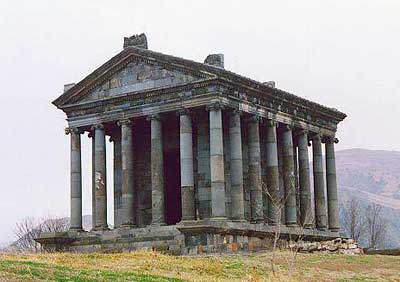
Geghard
The Monastery of Geghard (the Lance) is located 40 km southeast of the city of Yerevan in the mountainous region of Kotayk. It is near the town of Garni. Geghard is another incredible ancient Armenian monastery, partly carved out of a mountain. Inscriptive and documentary references to the monastery, also known as Ayrivank', date from the 7th and 10th centuries, respectively. Ayrivank' has also been called 'the monastery of the cave', 'the monastery of seven churches' and 'the monastery of the forty altars'. Alternately, it was also called Gheghardavank', 'the monastery of the spear or lance'. The monastic complex presently located within the existing walls dates to the 13th century and includes the main structures of the Katholike, a gavit, two rock-cut churches which were hollowed out of the steep cliffs on the north side of the monastery and a zhamatun. The complex includes a seminary and scriptorium. All around the monastery are caves and khachkars. In the enclosure are numerous chapels and cells carved out of the natural rock on several levels of the mountain slope. Outside the walls to the west is the rock-carved chapel of S. Astvadzadzin (Mother of God) on which the earliest inscription is dated 1164 AD.
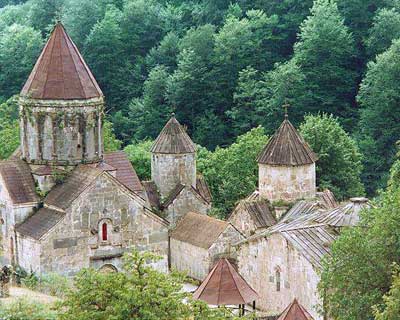
(hour)
4
14 pax
55
17 pax
60
50 pax
120
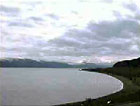
Sevanavank
Originally made from three churches, the monastery Sevanavank was built on an island. Receding waters in the 20th century created the current peninsula. The monastery was founded in 874 by King Ashot I. The island monastery was, according to historians of the time, used both for workshop and pilgrimage and as a place of exile for Armenian noblemen who had fallen into disgrace. Sevanavank consists of two remaining rough-hewn churches built on the peninsula near the city of Sevan -St. Arakelots and Astvatsatsin. The courtyard had some interesting green khatchkars. They were carved from a plentiful local green stone and stood out from the others across Armenia made of tuff. The altar is one of the nicest in Armenia, and this is one of the few active monasteries in Armenia.

(hour)
4
14 pax
55
17 pax
65
50 pax
145
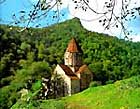
Lake Sevan, Dilijan, Haghartsin
Sevanavank
Originally made from three churches, the monastery Sevanavank was built on an island. Receding waters in the 20th century created the current peninsula. The monastery was founded in 874 by King Ashot I. The island monastery was, according to historians of the time, used both for workshop and pilgrimage and as a place of exile for Armenian noblemen who had fallen into disgrace. Sevanavank consists of two remaining rough-hewn churches built on the peninsula near the city of Sevan -St. Arakelots and Astvatsatsin. The courtyard had some interesting green khatchkars. They were carved from a plentiful local green stone and stood out from the others across Armenia made of tuff. The altar is one of the nicest in Armenia, and this is one of the few active monasteries in Armenia.
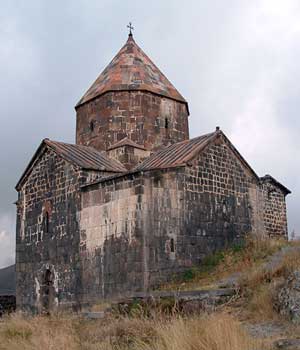
Haghartsin
Haghardzin monastery is nestled in a temperate rainforest on a mountainside. The first warning of the approaching monastery is a small cave-like building and some khatchkars on the left of the road, as you are heading down a steep mountainside with another mountain opposite to you, way off to the left. The picturesque monastery of Haghartsin is located in a beautiful and dense forest 18 km. outside of the town of Dilijan. The Haghartsin complex consists of the Churches of the St. Astvatsatsin (Holy Virgin) (1281 A.D.), St. Gregory (XI century) and St. Stephen, the porch of St. Gregory (end of XII and beginning of XIII Centuries) and the refectory (1248 A.D.), built by the talented architect Minas. St. Astvatsatsin Church in Haghardzin (1281) deserves special mention. This is the biggest building of all, the artistic dominant of the ensemble. The refectory of Haghardzin, built by he architect Minas in 1248, is also a structure of a rare composition.
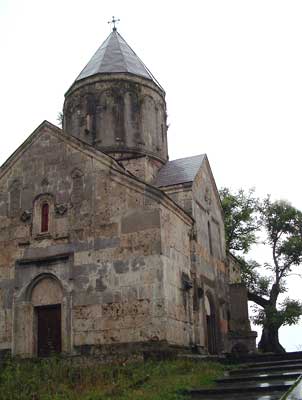
(hour)
6
14 pax
80
17 pax
95
50 pax
205
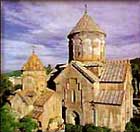
Tsakhkadzor
It's one of the nicest places of Armenia. In 1960 a sport complex was built in Tsakhkadzor (2000 m height). It has comfortable hotels with various sport-halls. The origin of this place goes back to 11th century, when the magister Grigor Pahlavuny had founded a church named as Kecharis (later it was renamed Tsakhkadzor). It is a complex of four beautiful small churches with patterned cross-stones, the pride of Armenian architecture.
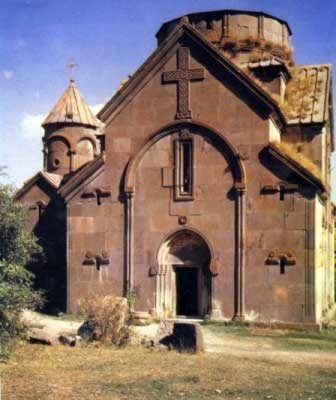
(hour)
4
14 pax
50
17 pax
55
50 pax
120

Khor Virap
This monastic complex of 4-17 cc. has a special place in the Armenian architectural heritage. It is near Artashat town in the Ararat valley and has Biblical Ararat in the background. This monastery was built on the site of the ancient Armenian capital Artisan. It's on the way to St. Echmiadzin, and is full of legends and stories of how Armenia became a Christian state. The name Khor Virap means a Deep Dungeon, where the legend says Gregory the Illuminator who brought Christianity to Armenia, was kept by King Trdat for 13 years and survived, thus proving the real God and true religion. After all the sufferings Gregory had in cell , the King, who was punished by God turning his head to one of a boar, then cured by Gregory , forgives him, announces Christianity state religion and Gregory the Illuminator the first All Armenian Patriarch. To this day you can visit the underground chamber he was imprisoned, located in the nondescript St. Gevorg Chapel apart from the main church. Be careful in this building, there are two holes which can be climbed down but are unmarked. There is one smaller chamber by the door which has some stairs and then a twist and a ladder leading to the small room. There is another hole in the main room, to the right of the altar, with a long ladder leading down into the larger cistern where Grigor Luisavorich was imprisoned. It is actually impressive in size for an underground prison cell. One can still go down to the dungeon by perilous metal stairs to feel the spirit of those legendary days. Khor Virap was also an educational center in middle ages.
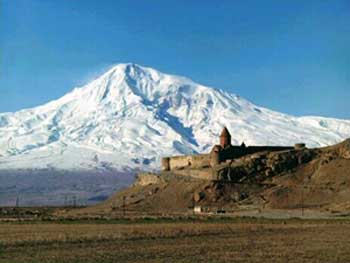
(hour)
4
14 pax
55
17 pax
60
50 pax
120
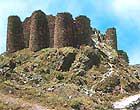
Amberd
Amberd is a fortress complex with a church built on the slopes of Mt. Aragats at 2,300 meters above sea level in the XI-XIII centuries. The road leading up to it on Mt. Aragats is virtually uninhabited and has gently sloping hills with the occasional shepherd and beekeeper. many wildflowers and great views. Amberd is a tall fortress built on a rise in between two streams. The church, built in 1026 by the architect Vagram Pakhlavuni, is slightly down the hill from the fortress, nearer to where the two streams join.
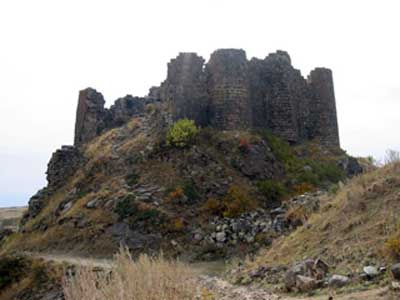
Byurakan
It is considered to be the cradle of astronomical achievements of the Armenian nation. The silver dome of the observatory is shining in the greenery of Byurakan.
The observatory was established in 1946 and is located at 1500 altitude above the sea level. One of the most powerful telescopes of the world is located there
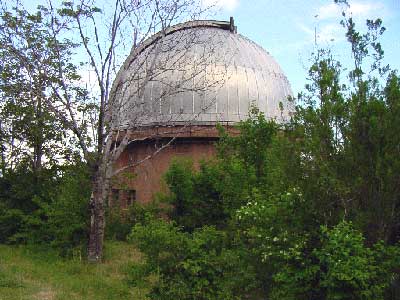
(hour)
5
14 pax
55
17 pax
65
50 pax
155

Oshakan
The place was mentioned by Armenian historians in 440 A.D. with reference to the inventor of Armenian alphabet Mesrop Mashtots. The excavations discovered monuments from different centuries on the territory of Oshakan. St. Mesrop Mashtots church, which was constructed in 1875-79 is located in the center of village.
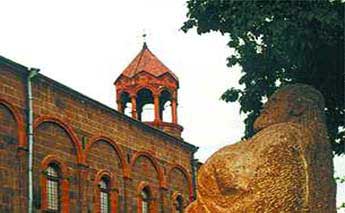
(hour)
3
14 pax
45
17 pax
55
50 pax
100
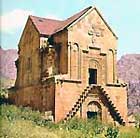
Noravank
The monuments of Noravank are situated on a ledge of a deep winding gorge of a tributary of the Arpa river near the village of Amagu, Yeghegnadzor District. Noravank ensemble stands amidst the bizarre-shaped precipitous red cliffs. Built in place of an ancient cloister, it grew in the reign of Princes Orbelian of Syunik. In the 13th-14th centuries the monastery became a residence of Syunik's bishops and, consequently. a major religious and, later, cultural center of Armenia closely connected with many of the local seats of learning, primarily with Gladzors famed university and library. Noravank ("New monastery") was founded by Bishop Hovhannes, Abbot of Vahanavank, who moved there in 1205. During the 13th and 14th centuries a series of princes of the Orbelian clan built churches which served as the burial site for the family. The monastery became the center of the Syunik bishopric. The nearest and grandest church is the Astvatsatsin (Mother of God), also called Burtelashen ("Burtel built") in honor of Prince Burtel Orbelian, its donor. The church, completed in 1339, is said to be the masterpiece of the talented sculptor and miniaturist Momik. The ground floor (locked) contained elaborate tombs of Burtel and his family. Narrow steps, projecting from the west facade, lead up to the entrance to the church/oratory. Note the fine relief sculpture over the doors, Christ flanked by Peter and Paul. The second church is the S. Karapet, a cross-in square design with restored drum and dome built in 1216-1227, just north of the ruins of the original S. Karapet, destroyed in an earthquake. Forming the western antechamber is an impressive gavit of 1261, decorated with splendid khachkars and with a series of inscribed gravestones in the floor. The side chapel of S. Grigor, built in 1275, contains more Orbelian family tombs, including a splendid carved lion/human tombstone dated 1300, covering the grave of Elikum son of Prince Tarsayich Orbelian
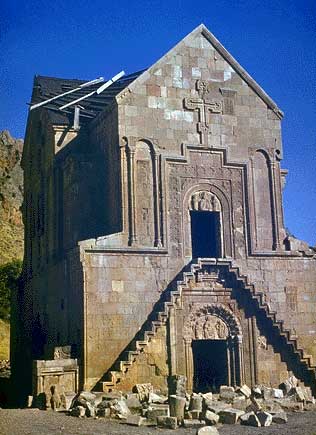
(hour)
6
14 pax
80
17 pax
90
50 pax
190

